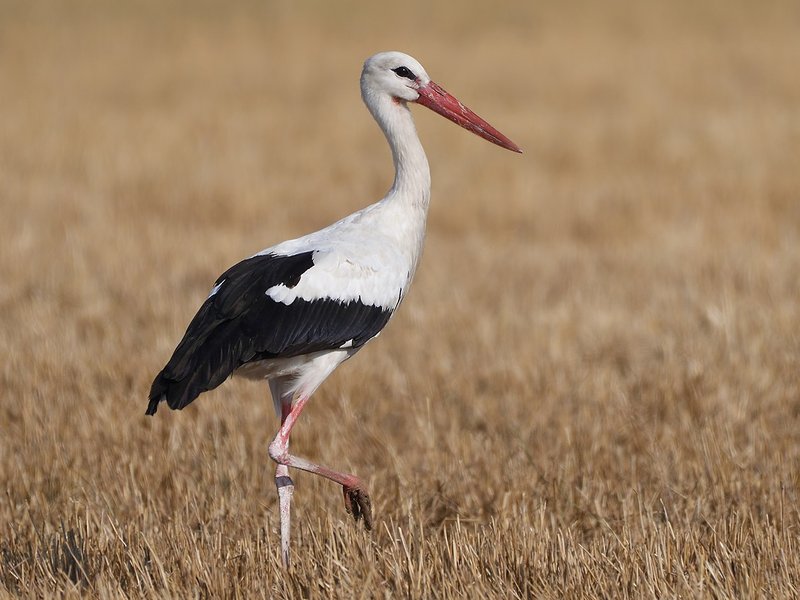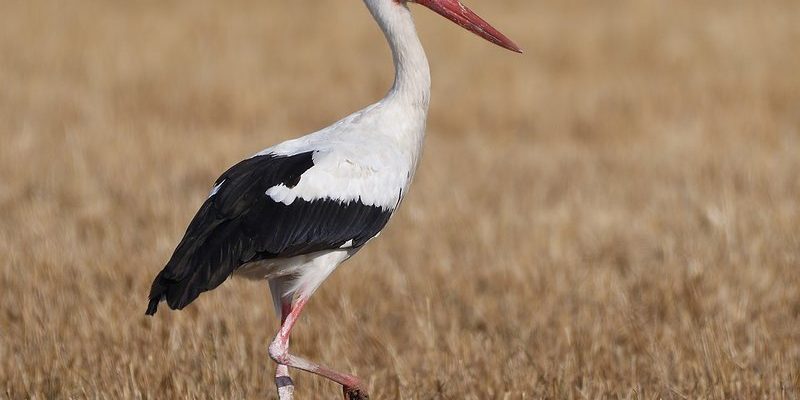
Honestly, storks are like the elegant storytellers of the bird world. With their long legs and striking wingspans, they glide through wetlands and fields, leaving a trail of wonder in their wake. So, grab your favorite drink, and let’s dive into some lesser-known yet incredibly interesting facts about storks. You might find yourself looking at these lovely birds in a whole new light!
1. Storks Are Actually Quite Large
Storks are not your average backyard birds. They belong to a family called Ciconiidae and can grow pretty big. The largest stork species, the white stork, can reach up to 4 feet tall, with a wingspan stretching from about 6 to 8 feet! Imagine standing next to a bird that’s almost as tall as a toddler! Their impressive size allows them to cover large distances during migration.
You might be wondering why size matters. Well, being large helps storks spot their prey from high above. These birds hunt for fish, frogs, and insects in wetlands and shallow waters, and their size gives them a significant advantage when it comes to spotting meals. It’s like having a bird’s-eye view of the dinner plate!
2. Migratory Masters
Storks are incredible travelers! Many species are famous for their long migrations, traversing thousands of miles between breeding and wintering grounds. For example, the white stork migrates from its breeding grounds in Europe to winter in Africa. This journey can be over 6,000 miles long! Just think about it: a bird flying across continents, navigating by instinct and the stars.
Now, I know what you might be thinking—how do they manage such a feat? Storks take advantage of thermals, which are warm air currents that help them soar without flapping their wings too much. This energy-efficient flying style allows them to travel long distances while conserving energy. It’s like taking a first-class flight without the heavy price tag!
3. Elegant Nest Builders
Storks are not just travelers; they’re also exceptional builders. These birds construct large nests made of sticks and branches, often in high places like treetops or even on rooftops in human settlements. It’s pretty common to see a stork’s nest balancing on a chimney or a bell tower. They don’t mind living close to humans, which adds a unique charm to their character.
What’s interesting is that stork nests can grow quite large over time, sometimes weighing more than a ton! They return to the same nest year after year, often adding more materials each season. Imagine your house being so cozy that you just keep adding layers on top of it every summer!
4. Cultural Symbolism
In many cultures, storks symbolize fertility and new beginnings. You’ve probably heard the stories where storks are depicted as delivering babies. This symbolism comes from their migratory habits, which align with the spring season—a time of renewal and birth. It’s a beautiful connection, don’t you think?
Many countries, especially in Europe, still celebrate storks as harbingers of good luck. In fact, some cultures believe that having a stork nest nearby is a sign of prosperity. This positive image of storks has made them a popular mascot for various charities and organizations aiming to promote family and community values.
5. Unique Feeding Habits
Storks are quite the culinary experts! They mainly feed on fish, frogs, and even small mammals. They have a specialized hunting technique that combines patience and precision. Standing still for long periods, they wait for the perfect moment to strike. With their long, pointed beaks, they can quickly snag their dinner from the water. It’s like watching a chef masterfully prepare a dish—slow at first, but then, boom!
Interestingly, storks have been known to eat carrion as well. They play a vital role in their ecosystems by helping to clean up dead animals, thus preventing the spread of disease. So, while they might look delicate, these birds are also essential players in maintaining the health of their environment.
6. Social Creatures
Storks are highly social birds! They often gather in large groups, especially during migration or when feeding. You might spot flocks of storks sharing a meal in a field, chatting and interacting with each other. It’s a bit like a bird party, where everyone is invited to join in the feast.
Their social nature extends to their nesting habits too. While some birds are solitary nesters, storks enjoy building their nests in colonies. This community aspect provides safety in numbers, helping to protect against predators. It’s a great example of how teamwork can create a thriving environment—just like our own communities!
7. Storks Have a Diverse Family
There are about 19 species of storks, each with unique characteristics and habitats. For instance, the African openbill stork has a unique bill that helps it feed on snails and other aquatic creatures. Meanwhile, the wood stork prefers freshwater wetlands and is known for its habitats in the southeastern United States.
With all this diversity, it’s no wonder storks adapt well to different environments. They’ve been spotted in everything from marshes and grasslands to urban areas. This adaptability allows them to thrive in various climates, showing just how versatile these birds can be. It’s like having a whole family of unique personalities, each one bringing something special to the table!
8. Breeding Rituals Are Fascinating
Storks have some pretty interesting courtship rituals that are quite a sight to see. Male storks perform elaborate dances to impress potential mates. They raise their wings, bow, and make a series of clattering noises with their beaks. It’s like a bird version of a romantic dance competition!
Once they choose a partner, storks are generally monogamous and mate for life. Their strong partnerships are evident when they care for their young together. Both parents take turns incubating the eggs and feeding the hatchlings. This teamwork not only strengthens their bond but also ensures the survival of their offspring, making it a lovely testament to family values in the animal kingdom.
9. Environmental Indicators
Storks play a crucial role in their ecosystems, acting as indicators of environmental health. Because they rely on wetlands and clean water sources for feeding, their population can reflect the overall state of these habitats. If stork numbers decline, it often signals issues with water quality or habitat destruction.
So, when you see these majestic creatures, remember they’re not just beautiful to look at; they’re also telling us something important about the health of our environment. It’s a reminder of the interconnectedness of nature and how every species, large or small, plays a vital role in the ecosystem.
10. Conservation Efforts
As wonderful as they are, many stork species face threats from habitat loss, pollution, and climate change. Efforts are underway worldwide to protect their habitats and ensure their survival. Organizations are working hard to restore wetland areas and promote sustainable farming practices that benefit storks and other wildlife.
As a bird lover or just someone who appreciates nature, you can play a role in these efforts too. Supporting local conservation initiatives helps protect the delicate ecosystems that storks and countless other species depend on. It’s about creating a thriving world for them and us!
To wrap it up, storks are truly remarkable birds that inspire awe and curiosity. From their impressive migrations and unique feeding habits to their cultural significance, there’s so much to appreciate about these feathered friends. Next time you see a stork soaring in the sky or nesting nearby, take a moment to enjoy the beauty and complexity of their lives. They might just remind you of the magic of nature and the connections we all share.

